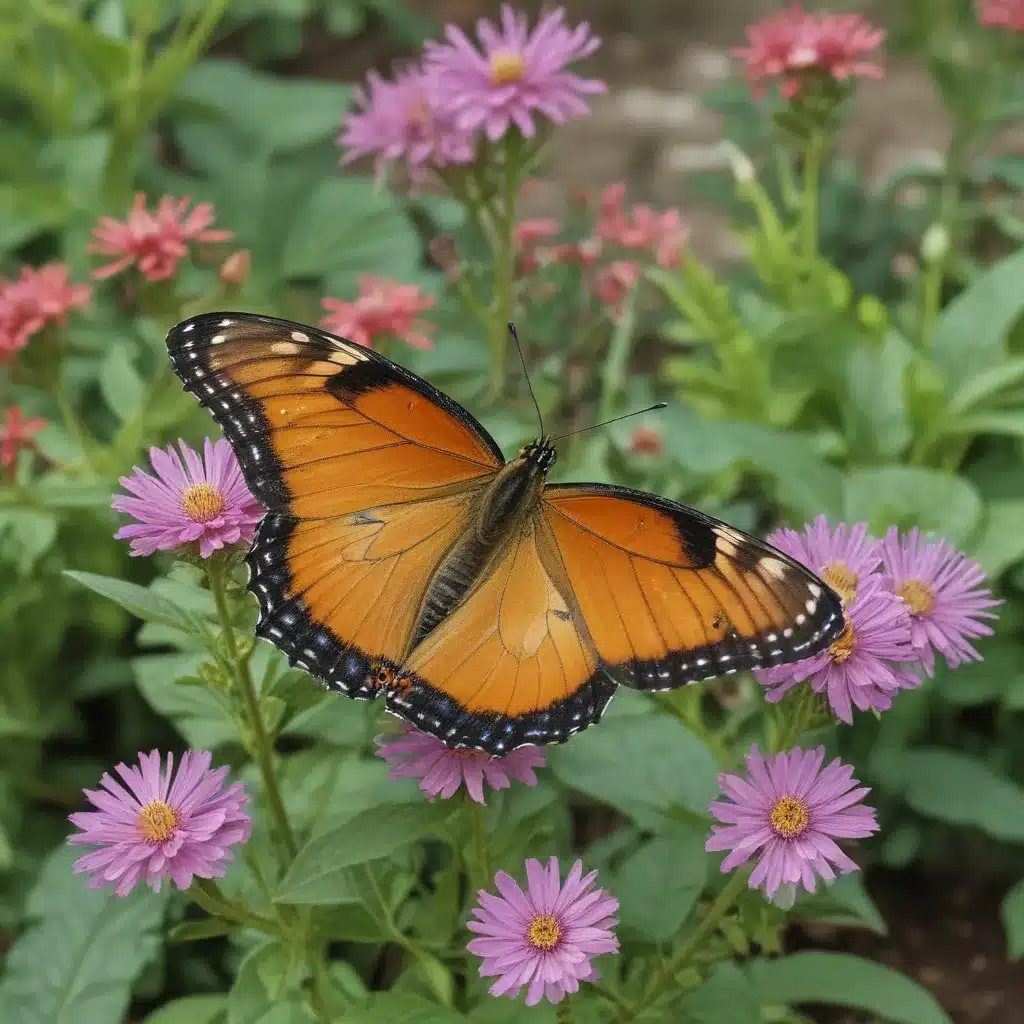The Kaleidoscope of Life: Attracting Nature’s Winged Wonders
As I gaze out at my vibrant garden, I can’t help but marvel at the bustling activity all around me. The air is alive with the graceful flutter of butterflies, the industrious buzzing of bees, and the cheerful chirping of birds – all drawn to the bounty of colorful blooms and lush foliage that fill this verdant oasis. It’s a delightful symphony of life, and I’m honored to be the conductor of this natural orchestra.
My garden wasn’t always this way, though. When we first moved into our Temecula home, the yard was a blank canvas, devoid of the vibrancy I craved. But with a little research and a lot of trial and error, I’ve transformed it into a veritable haven for the winged creatures that bring so much joy to my life. A1 Landscape Construction has been an invaluable partner in this journey, helping me create a landscape that not only looks stunning but also provides invaluable resources for our pollinator friends.
Cultivating a Pollinator-Friendly Oasis
The first step in my quest to create a garden that gives back was to carefully select the plants that would form the backbone of my design. I knew I wanted to focus on species that would attract a diverse array of butterflies, bees, and birds, so I turned to the experts for guidance.
Karen Hugg’s insights proved to be particularly insightful. She shared how she had created a vibrant “island bed” in her own garden, featuring a carefully curated mix of trees, shrubs, and perennials that have stood the test of time and continue to thrive, even in the face of harsh winters and pesky moles.
Inspired by her example, I set out to build my own pollinator-friendly oasis. At the heart of my garden, I planted a stunning Oklahoma Redbud, whose magenta blooms in spring and glossy, rounded leaves provide a beautiful focal point. Surrounding this tree, I’ve created a lush tapestry of shrubs, including Mexican mock orange, rosa glauca, and a majestic, although sometimes unruly, purple smokebush lilac.
Pockets of Diversity, Pockets of Joy
But the real magic happens in the smaller pockets of my garden, where I’ve carefully curated a diverse array of perennials and smaller shrubs to attract an even wider range of pollinators. Tucked among the larger plants, you’ll find the vibrant red blooms of bee balm, the delicate pinks of phlox, and the sunny cheerfulness of geum. These plants with their flat, clustered flowers are magnets for butterflies, who flutter from bloom to bloom in search of nectar.
For the hummingbirds, I’ve planted a selection of tubular flowers, like the purple spires of salvia and the cascading fuchsias, that are perfectly suited to their long, slender bills. And of course, no pollinator-friendly garden is complete without the ever-important host plants, like milkweed and fennel, that provide essential food and shelter for caterpillars.
A Sanctuary for Feathered Friends
But my garden isn’t just a haven for the buzzing and fluttering creatures – it’s also a gathering place for our feathered friends. Strategically placed birdbaths and feeders throughout the landscape ensure that there’s always a reliable source of water and sustenance for the birds that flit from tree to tree, adding their cheerful songs to the symphony of life.
As the Fine Gardening article suggests, I’ve incorporated a variety of plant species that offer both food and shelter for our avian visitors. The dense evergreen foliage of the rhododendron and the fluffy seed heads of the miscanthus provide much-needed cover, while the nectar-rich blooms and berry-laden shrubs ensure that there’s always a ready supply of nourishment.
A Constantly Evolving Masterpiece
Of course, maintaining a garden that gives back to nature is an ongoing process, and I’ve learned that flexibility and adaptability are key. Over the years, I’ve had to make adjustments, removing plants that succumbed to disease or pests and replacing them with hardier specimens more suited to our local climate.
As the Real Gardens Grow Natives article highlights, it’s important to choose plants that are well-suited to your specific growing conditions, and I’ve had to learn that lesson the hard way. But through it all, I’ve remained committed to creating a space that not only delights the senses but also supports the delicate balance of our local ecosystem.
As I wander through my garden, I’m constantly in awe of the vibrant tapestry of life that has unfolded before me. The flutter of butterfly wings, the gentle hum of bees, and the cheerful chirps of birds – they’re all a testament to the power of thoughtful, nature-centric gardening. And with the help of dedicated professionals like A1 Landscape Construction, I know that I can continue to cultivate this ever-evolving masterpiece, one that gives back to the creatures that make our world so wondrous.




